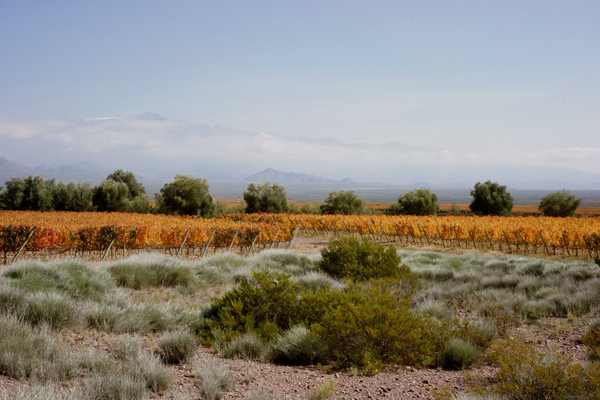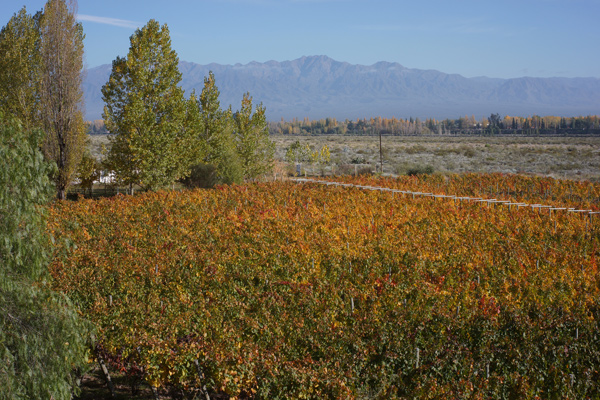Tasting Report: Argentina's Exciting Whites
 Everyone talks about Argentine reds, but some fascinating, even world-class whites are also being produced from minerally torrontés from the region of Salta to sauvignon blancs and semillons from the Rio Negro in Patagonia.
Everyone talks about Argentine reds, but some fascinating, even world-class whites are also being produced from minerally torrontés from the region of Salta to sauvignon blancs and semillons from the Rio Negro in Patagonia.
The best whites continue to be international varieties, particularly chardonnay and semillon. My top white from Argentina this year was from Catena Zapata. Its 2012 Chardonnay Gualtallary Valle de Uco White Bones shows the acidity and intensity of a top grand Chabils along with all the minerality one could hope for in a white of the genre.
The ubiquitous chardonnay is made in a range of different styles in Argentina. Excessively creamy and oaky versions are commonly found across the map and tend to be the most boring from the county. However, winemakers like Catena's Alejandro Vigil and Zuccardi's Sebastian Zuccardi are cutting back on malolactic fermentations and using wood sensibly, looking for an expression of their vineyards with a Burgundian sense of style. They are also planting in higher and cooler altitudes in limestone rich soils in order to attain freshness and typicity. The resulting wines deliver intense, almost severe, mineral expressions of a world-class chardonnay that definitely deserves attention.
 For example, Vigil's White Bones and White Stones chardonnays are planted at 1,500 meters altitude on two different types of calcareous soils that are harvested at three different times to increase complexity and balance. The two wines are very distinctive despite coming from vineyards only separated by a few yards with completely different soil compositions.
For example, Vigil's White Bones and White Stones chardonnays are planted at 1,500 meters altitude on two different types of calcareous soils that are harvested at three different times to increase complexity and balance. The two wines are very distinctive despite coming from vineyards only separated by a few yards with completely different soil compositions.
Another one of my favorites is whites from old vine semillon plantings, mostly from the southern region of Patagonia as well as in Mendoza. The wines, while maintaining the exuberant quality characteristic to the variety, remain deliciously dry and fresh. Look for Miras in Patagonia or Mendel in Mendoza for two of the finest examples of the variety in Argentina.
As for indigenous grape types, torrontés remains the flag bearer of Argentina's whites. Torrontés, when made properly, produces crisp and intensely aromatic whites, full of clarity and character. I prefer unoaked versions. And while it’s hard to pin down a specific style of torrontés, purity, freshness, and precision seem to be key in making outstanding whites from the grape.
 The future for whites is very exciting. Argentina is a big country, about one third of the size of the United States, and while viticulture is inextricably linked to the Andes range in the west, the Atlantic Coast remains largely unexplored. One of the most exciting new wine growing regions is the cool maritime climate of Chapadmalal, which is located about 400 kilometers south of Buenos Aires.
The future for whites is very exciting. Argentina is a big country, about one third of the size of the United States, and while viticulture is inextricably linked to the Andes range in the west, the Atlantic Coast remains largely unexplored. One of the most exciting new wine growing regions is the cool maritime climate of Chapadmalal, which is located about 400 kilometers south of Buenos Aires.
“We have great faith in the region,” claims Daniel Pi, technical director at Trapiche and one of the pioneers in the Chapadmalal region. The climate, which is on average two degrees cooler than the higher sections of the Uco Valley in Mendoza, and the evenly distributed copious rains that allow for dry farming, make it very propitious for whites. The moderating effect of the ocean, which allows extended maturations, preserves aromas and flavors that are otherwise lost in warmer, more aggressive climates.
Pi has already planted riesling, albariño, sauvignon blanc, chardonnay and even gewürztraminer in the region. The best wine I tasted from here was indeed a chardonnay from Trapiche, showing brightness and freshness as well as a minerally, salty undertone.
After tasting and drinking close to 100 whites from Argentina during a two week trip to the country in April, I kept thinking about what Buenos Aires-based Andres Rosberg, president of the Argentine Association of Sommeliers, told me during a dinner together: "It's time people realize that Argentina is not only malbec, and that Argentina is also not only red wine." Indeed, there’s a lot to get excited about when it comes to Argentina's growing fine white wine production.
Photo 1: View of Uco Valley where some of top Argentina's whites are made. Photo 2: Alejandro Vigil, technical director at Catena Zapata as well as co-owner and winemaker at El Enemigo, who makes the most compelling chardonnays in Argentina. Photo 3: Higher altitude and poor limestone rich soils is a perfect combination for whites.
-James Suckling and Jacobo Garcia Andrade Lllamas